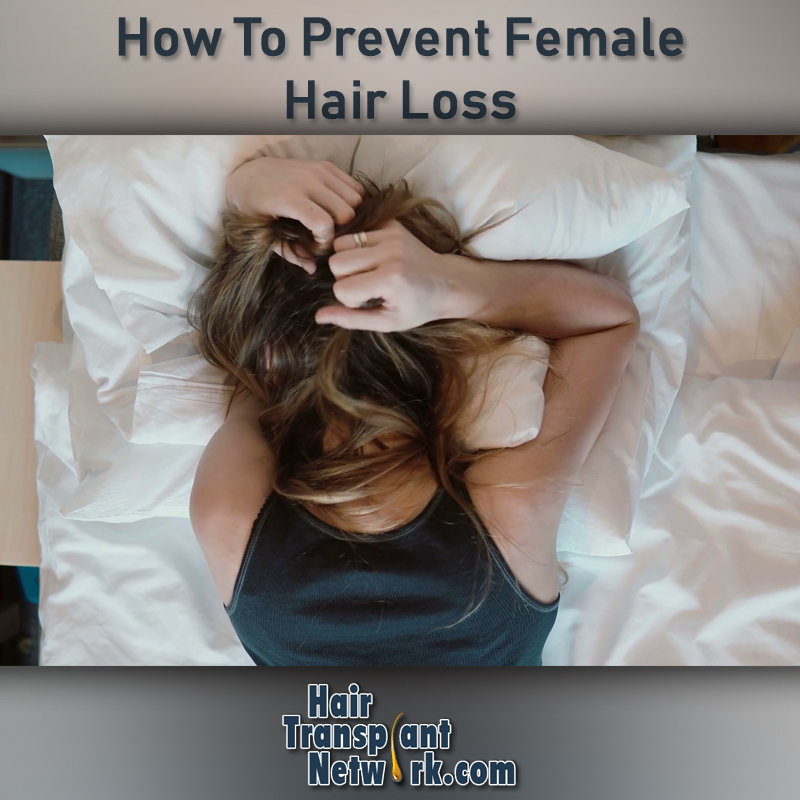Are you worried about excessive hair loss? Hair thinning and baldness can be a major cause of poor self-esteem in women of any age group or ethnicity. A female’s current lifestyle can sometimes be the source of cause of excessive hair loss and balding. So, to avoid hair fall, women with hair loss need to take certain precautions.
According to medical experts, like men, some women are genetically inclined to experience balding or hair thinning. This is carried out by certain hormonal changes and the environment.

Hair loss in women is more common than you think. Almost every woman has undergone this problem at least once in their lifetime. However, taking the right precautions can always keep hair loss and balding at bay. Here are a few tips to prevent non-genetic hair loss:
Eat a protein-filled diet
Hair is made from a fibrous protein called keratin. When the body lacks keratin, hair and nails become fragile, break, and fall off. Eating a protein-filled diet consisting of eggs, spinach, meat, fish, milk, and low-calorie cheese can help the body regain lost proteins. Eggs are rich in biotin and protein, the two vital nutrients that promote healthy hair growth. They also add volume to the hair.
Oil your hair regularly
Applying oil to the hair and scalp is the most traditional and ancient method to prevent hair loss and balding. Essential oils can be found in certain shampoo, conditioner and topical products and can provide protection, nourishment, and strength to hair follicles. One can choose from a variety of hair oils that suits an individual’s hair. Some of the common hair oils are coconut oil, almond oil, castor oil, extra virgin olive oil, and grapeseed oil. You can also mix these oils with other essential oils to add more benefits to it.
Avoid hair processing
Using the hair iron to curl and straighten hair, excessive blow drying, hair dying and highlighting or any other strong chemical or high heat methods can increase hair loss problem in women. These unnatural methods used for beautifying your hair can cause serious damage to the sebaceous glands on the scalp. Sebaceous glands produce natural oil that keeps your hair nourished and protected.
Kneading the scalp
Running your fingers through each strand of hair makes it strong from the roots. Kneading your scalp during a shower can increase blood flow and nourishes the roots. Be sure to use a chemical-free herbal shampoo while massaging your scalp. Using chemical-based shampoos and conditioners can weaken hair follicles.
Avoid fixing entangled hair
Using a sharp-toothed comb or a grizzly brush to disentangle hair locks and damp hair is not a good idea. Yanking your brush through damp hair will lead to more hair loss than expected. Instead, use hair serums or herbal conditioners to soften the hair. Firstly, run your fingers through the disentangled locks and then gently brush or comb each section to even out your hair.
Use medicated shampoos and supplements
If you suspect severe hair loss, seek medical help immediately. In the meantime, using over-the-counter medical shampoos and eating herbal keratin-rich supplements that help reduce hair fall may help. Most medical shampoos are fortified with amino acids, proteins, and other nutrients that promote strong, healthy, and voluminous hair.
Genetic Hair Loss and Non-surgical Treatments
The above methods and treatments are great for women with varying degrees of non-genetic hair loss. However, no matter how many times you knead scalp, apply oil can take care of your hair, hereditary baldness is progressive and will continue forward unless more dramatic treatments are used. The most common and most effective, FDA approved hair loss treatment for women is Rogaine (minoxidil). Other popular treatments include Spironolactone and low-level laser therapy (LLLT).
Hair transplant Surgery
Some women may choose to undergo hair transplant surgery where various techniques are used to restore the hair. During the hair transplant procedure, the dermatologist removes follicular units from the donor area which is typically the sides and back of the scalp in one of two ways. Donor harvesting techniques include follicular unit strip surgery or FUSS and follicular unit excision or FUE (formerly called follicular unit extraction).
The hair restoration physician then implants these hair grafts into the bald areas of the scalp. You may need more than one session to get the desired effect.
Patients will be given some instructions and recommendations regarding the recovery period. The recent advances in technology have made hair transplant surgery reach a new height. The ability to provide natural looking hair encouraged a large number of bald men and women to opt for this method.
If you are considering a hair transplant, make sure the surgeon has relevant experience and qualifications.

